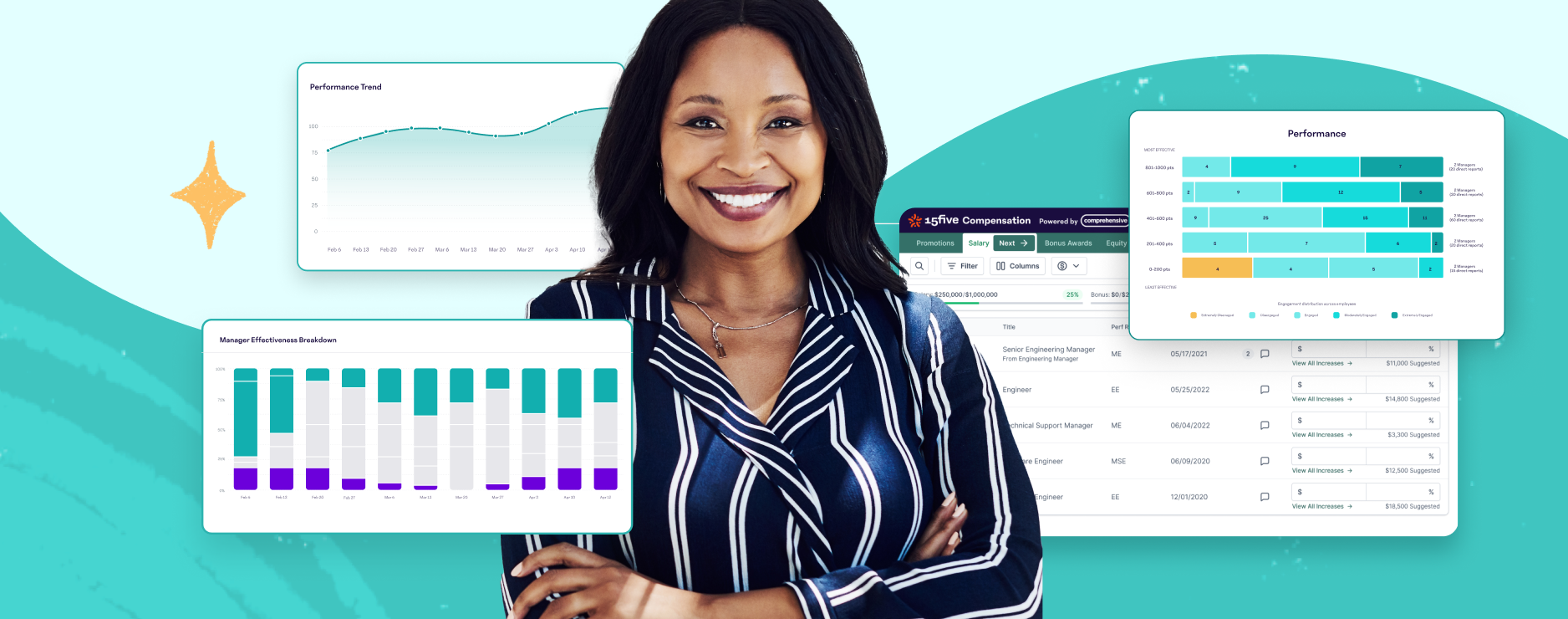The Power of Purpose at Work: How Aligning Personal and Organizational Values Drives Engagement
‘Organizational purpose’ might sound like vague, aspirational corporate jargon.
Along with a mission, vision, and values, nearly every company has a statement of purpose lying around somewhere. But too often, these words have little relevance to what employees actually care about — or even what they practically do, day-to-day.
That’s a problem, because humans need purpose to feel motivated, inspired, and fulfilled. Because we pour so much time and effort into our jobs, as many as 70% of us want work to give us that sense of purpose.
We’ve all experienced what it’s like to work without a purpose. It’s that cog-in-the-wheel feeling of working hard, but not seeing any greater context or meaning for your efforts.
It’s draining, demotivating, and a killer for productivity and engagement. Don’t let it happen to your people! Here’s how to give your employees a purpose — and how doing so can transform your organization.
What purpose means in the workplace
Think of purpose as your ‘why.’ Beyond generating profits or value, purpose is the net positive outcome of the work you’re doing. What problem are you solving? How does it benefit your customers, society, or even your own employees?
An energy company’s purpose might be to keep communities functioning, or an educational software company might strive to democratize education for all learning styles.
As individuals, your employees have their own sense of purpose, too. Someone might find purpose in helping others, while mastering and excelling at new skills might be fulfilling for someone else.
When their company’s greater purpose lines up with what people find personally meaningful, it drives engagement, improves the employee experience, and boosts employee morale.
The power of purpose
People with purpose live up to their potential. They make the most of their skills, talents, and experience in every task, because they believe their work matters.
When people have a sense of purpose, they’re more productive and more engaged — there’s even some evidence they’re physically healthier. Purpose is associated with higher performance, better collaboration, and more innovation and creativity.
Purpose is the difference between ‘if I don’t finish this software update, my manager might be upset,’ and ‘if I don’t finish this software update, small businesses might not get their staff paid on time.’
It’s the opposite of feeling like a cog in a machine, or a hamster on a wheel. Purpose means people are collaborating, learning, and developing themselves to realize a big-picture outcome that actually makes a difference.
Purpose in action
These are lofty goals. But what do they look like in practice?
According to McKinsey, a sense of purpose in the workplace has two dimensions. First is the company’s greater purpose — the benefit you’re providing to people or to society. But equally important is how well that purpose integrates into employees’ daily experience. Even if they care about the company’s purpose, they’ll feel drained and unfulfilled if they don’t see it as part of their actual work.
Crucially, purpose is more than words. It’s not something to be discussed abstractly, or touted at a shareholder meeting. Rather, your purpose should be the practical framework through which people at your company approach each new challenge, decision, and consideration.
An empty purpose statement is worse than nothing. When statements about purpose and values aren’t carried out in concrete action, they’re outright harmful to employee engagement, loyalty, and morale.
Strategies for working with purpose
Living by your purpose is no small task. But with patience, an open mind, and a willingness to listen, any organization can work in a purpose-driven way.
Uncover your purpose through listening
Your purpose shouldn’t come from an executive brainstorming session. Instead, it should come from your people, and the work they’re already doing.
To discover your purpose, use focus groups, town hall meetings, and online sharing tools to talk to people at every level of your organization. In what ways are they already having a positive impact on society, your customers, or even their colleagues in their daily work?
Use purpose as your north star
A strong purpose is like a guide, pulling you towards the right course of action in nearly any situation. As you vet possible initiatives, actions, and solutions, ask yourself a simple question: “does this help us achieve our purpose?”
This method is so powerful because everyone can apply it to their daily work. Teams understand the big picture — so instead of reviewing every decision, managers can trust their reports to process information and act autonomously.
Let leaders share personal purpose
Purpose is a highly sensitive, personal topic. To share what they find fulfilling — and how they can access it at work — your employees need a sense of psychological safety. Start by coaching your leaders and managers on how to model that behavior, sharing what’s meaningful to them with authenticity and vulnerability.
What’s their own, individual purpose? How do they find that reflected in the organization’s greater mission? Finally, how do they translate their purpose into action, every day?
Make purpose-driven work an employee-led effort
Don’t give your employees rules or instructions on how to put your purpose into action. Instead, ask them how and when they already feel most connected to it in their daily work. Share those stories, and wherever possible give them ways to do more of those fulfilling tasks.
You can also seek out people in your workforce who are naturally purpose-driven, and rely on them to lead these employee-centric activities. With a little guidance, they’re a valuable resource to lead the change and inspire others.
Track your engagement strategy with 15Five
Purpose is a powerful way to boost your engagement — but integrating it into your daily work is a serious undertaking. To justify that level of effort, you need hard data to prove it’s working.
15Five lets you track employee engagement, performance, and other important metrics over time. Where are your efforts working? How could they be improved? It’s a comprehensive, all-in-one platform to collect feedback, facilitate conversations, and level-up performance across your organization.
Learn more about 15Five’s engagement assessment tools today.




